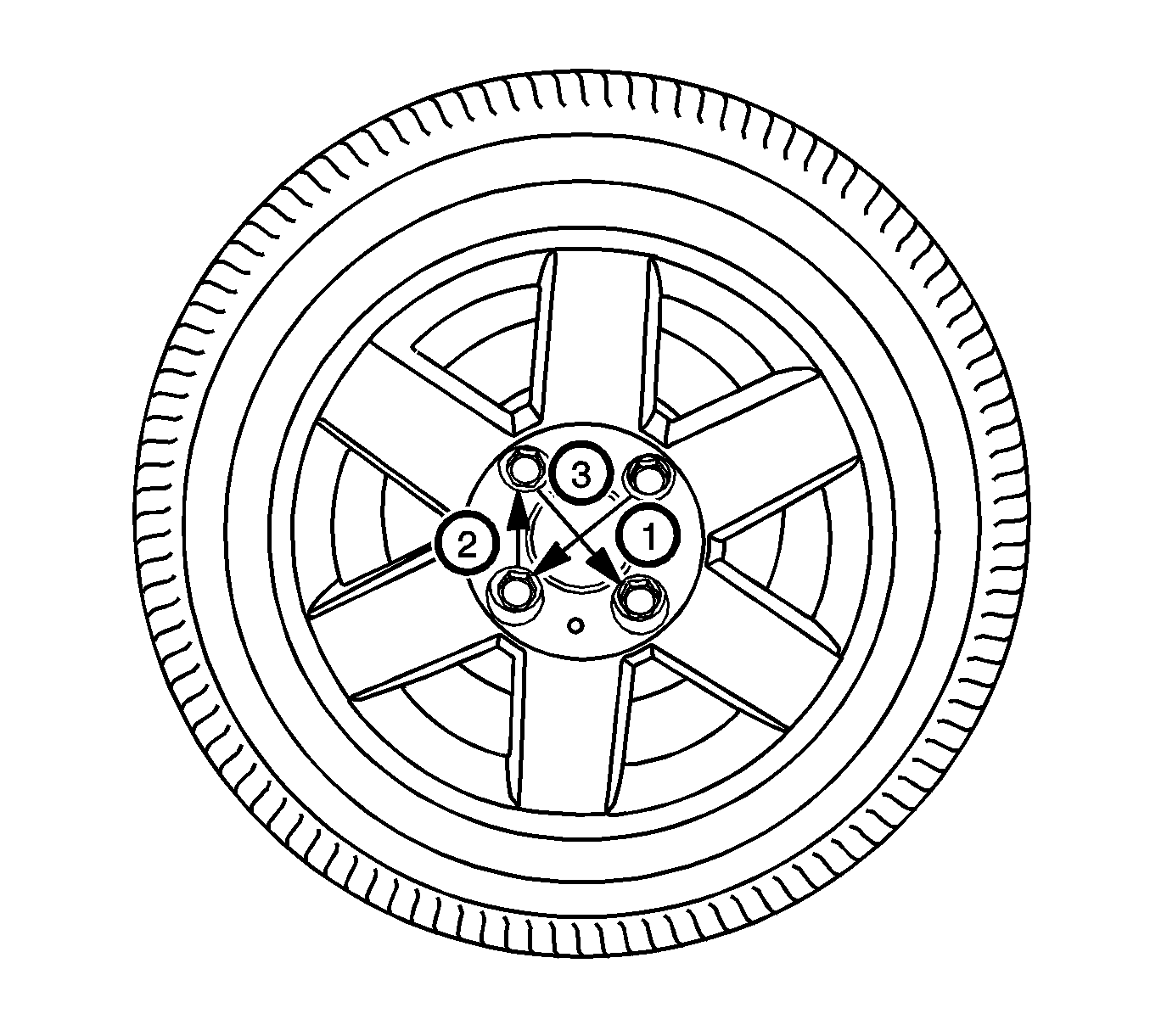Removal Procedure
- Remove the wheel cover.
- Loosen the wheel nuts.
- Raise and suitably support the vehicle. Refer to Lifting and Jacking the Vehicle .
- Remove the wheel nuts.
- Remove the wheel and tire assembly.

Caution: If penetrating oil gets on the vertical surfaces between the wheel and the rotor or drum, it could cause the wheel to work loose as the vehicle is driven, resulting in a loss of control and an injury accident. Never use heat to loosen a tight wheel. It can shorten the life of the wheel, studs or hub and bearing assemblies. Wheel nuts must be tightened in sequence and to the proper torque to avoid bending the wheel or brake rotor or drum.
Notice: Never use heat to loosen a tight wheel. It can shorten the life of the wheel, studs, or hub and bearing assemblies. Wheel nuts must be tightened in sequence and to the specified torque to avoid bending the wheel or rotor.
Important: Difficulty in removing the wheels from the vehicle can be due to foreign material or to a tight fit between the wheel centerhole and the hub or the rotor. These wheels can be removed by:
• Tightening the wheel nuts on the affected wheel and then loosening the wheel nuts by 2 turns. • Lowering the vehicle and rocking it from side to side as hard as possible, using 1 or more person's body weight to loosen the wheel. • Penetrating oil is not effective in removing tight wheels. If it is used, however, apply it sparingly and only to the wheel's centerhole area. • Raising the vehicle and removing the wheel.
Installation Procedure
- Mount the wheel and tire assembly.
- Install the wheel nuts in the sequence shown. Do not tighten the wheel nuts.
- Lower the vehicle.
- Install the wheel cover.

Important: Before installing the wheels, remove any buildup of corrosion on the wheel mounting surface and the rotor mounting surface by scraping and brushing them with a wire brush. Installing the wheels without good metal-to-metal contact at the mounting surfaces can cause the wheel nuts to loosen, which can later allow a wheel to come off while the vehicle is moving. Wheel bolts must be tightened in sequence and to the proper torque to avoid bending the wheel or the rotor.
Notice: Refer to Fastener Notice in the Preface section.
Tighten
Tighten the wheel nuts to 100 N·m (74 lb ft).
